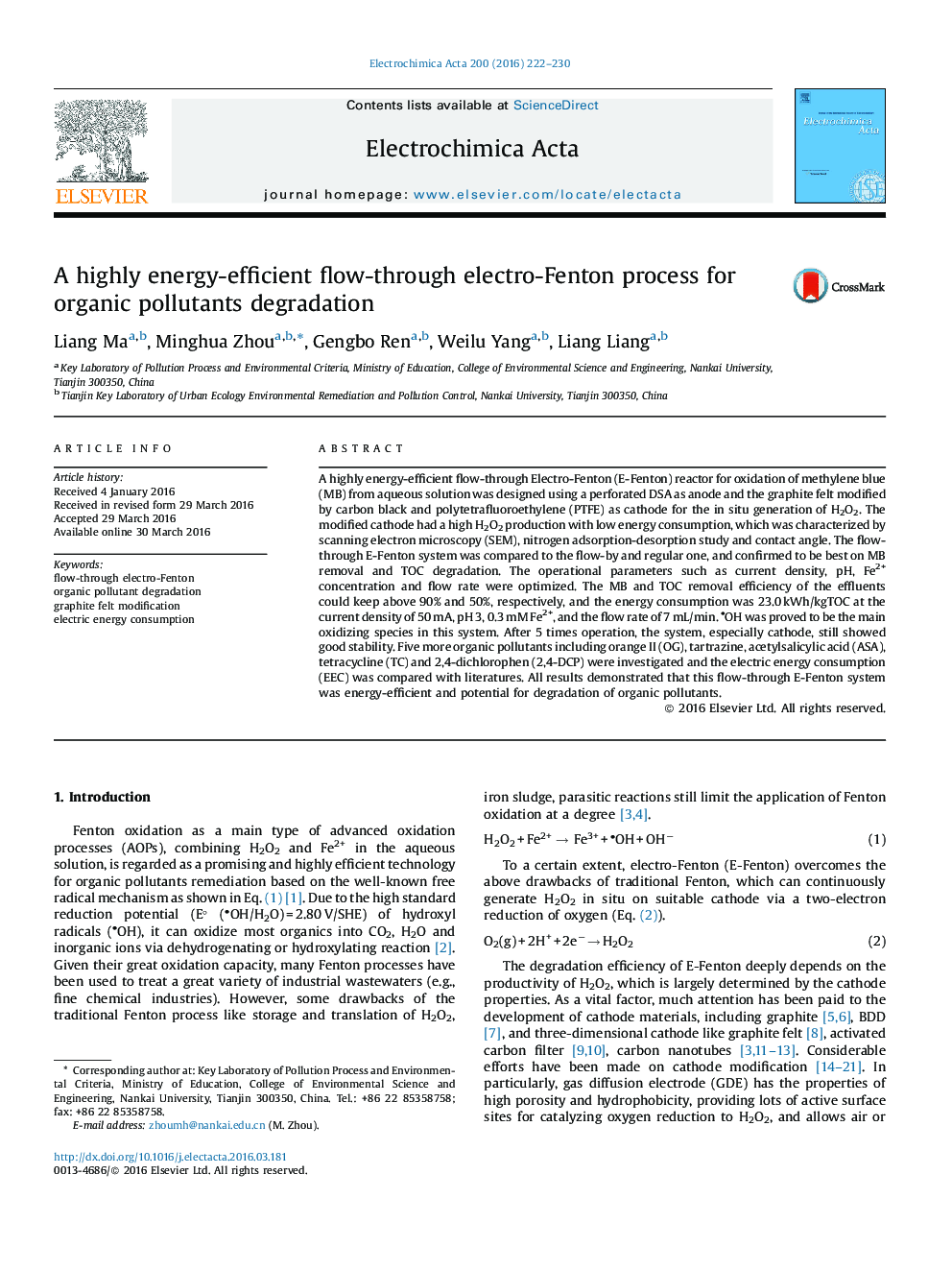| کد مقاله | کد نشریه | سال انتشار | مقاله انگلیسی | نسخه تمام متن |
|---|---|---|---|---|
| 183179 | 459537 | 2016 | 9 صفحه PDF | دانلود رایگان |
• A highly energy-efficient flow-through electro-Fenton reactor was designed.
• It had high H2O2 yield and low energy consumption for organic pollutants degradation.
• The effect of operational parameters was optimized and possible process mechanism was studied.
• The novel system performed wide practicability and potential for organic pollutants degradation.
A highly energy-efficient flow-through Electro-Fenton (E-Fenton) reactor for oxidation of methylene blue (MB) from aqueous solution was designed using a perforated DSA as anode and the graphite felt modified by carbon black and polytetrafluoroethylene (PTFE) as cathode for the in situ generation of H2O2. The modified cathode had a high H2O2 production with low energy consumption, which was characterized by scanning electron microscopy (SEM), nitrogen adsorption-desorption study and contact angle. The flow-through E-Fenton system was compared to the flow-by and regular one, and confirmed to be best on MB removal and TOC degradation. The operational parameters such as current density, pH, Fe2+ concentration and flow rate were optimized. The MB and TOC removal efficiency of the effluents could keep above 90% and 50%, respectively, and the energy consumption was 23.0 kWh/kgTOC at the current density of 50 mA, pH 3, 0.3 mM Fe2+, and the flow rate of 7 mL/min. OH was proved to be the main oxidizing species in this system. After 5 times operation, the system, especially cathode, still showed good stability. Five more organic pollutants including orange II (OG), tartrazine, acetylsalicylic acid (ASA), tetracycline (TC) and 2,4-dichlorophen (2,4-DCP) were investigated and the electric energy consumption (EEC) was compared with literatures. All results demonstrated that this flow-through E-Fenton system was energy-efficient and potential for degradation of organic pollutants.
Journal: Electrochimica Acta - Volume 200, 10 May 2016, Pages 222–230
